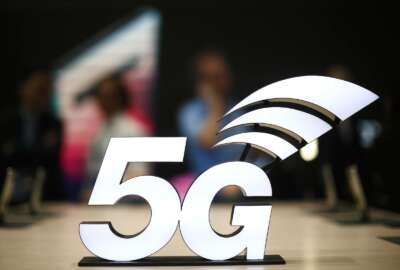
If wireless matters, 5G can’t come soon enough
4G shows just how fragile it is when a normal urban crowd gathers to celebrate.
Few events demonstrated the inadequacy of the nation’s wireless network capabilities than Saturday’s championship parade and rally for the Washington Nationals. Standing in the middle of the crowd, between a giant plow blade and an elderly gentleman in a wheel chair, I tried several things on my iPhone, all to no avail.
No text would go through, much less one with a photo attached. I could not e-mail a short, spontaneous audio recording to WTOP. I couldn’t send a plain e-mail with no files attached. I had four bars of LTE showing, all right. But with what, 100,000? 200,000? people in the same place, the network simply collapsed. People all around us were complaining. No wonder the Commerce Department, through its FirstNet group, worked so long to establish a dedicated first responder network.
The clogged network reminded me of how I chuckle when I see a road sign indicating an emergency escape route. If it rains or someone gets a flat tire, the main arteries in nearly every city jam solid. If some national security incident required evacuation, only those with personal helicopters would have a chance of getting away.
Anyway, we’ve got a national imperative, in my view, to get 5G really set up, if you believe mobile and wireless is the way more and more people are going to conduct their lives. The question is, whose equipment will the telecom providers use?
As our Jared Serbu reports, it might be too late to save our 5G networks from the Chinese manufacturers ZTE and Huawei. The FCC calculates 106 providers have already bought and installed Chinese-made gear. The Chinese hold more than a third of the 5G essential patents. Commissioner Jessica Rosenworcel testified recently that no U.S. manufacturers even make key 5G equipment.
You don’t have to be a Reed Smoot to understand the importance of having trusted sources of such crucial commodities. Not that the Chinese don’t engineer and manufacture excellent products, but will their 5G gear also deploy as surveillance technology for the benefit of the Chinese government and its sanctioned industries? Tariffs aren’t the answer here. American business standing up and getting to work is.
The FCC will vote before Thanksgiving on a rule to prevent recipients of money from its Universal Service Fund from spending on ZTE and Huawei equipment.
So then what?
A random search showed a link to Investopedia, which recommends Ericsson of Sweden and Nokia of Finland as places for investors to do well in 5G. They both make gear. It says Qualcomm is also looking to develop 5G integrated circuits. Forbes recently reported that U.S.-based (at least) manufacturers such as Dell EMC and Hewlett Packard Enterprises are moving to adapt their computers to telecom infrastructure applications. The Korean company Samsung is said to be developing core infrastructure products to compete with the above-mentioned ZTE, Huawei, Ericsson and Nokia.
The market is complicated, and my point here isn’t to mimic an analysis but rather to say the nation needs a rational supply chain policy for the 5G future.
Given White House policy for federal acquisition of equipment from the Chinese companies, and the FCC potential for regulating supply chains of the telecom industry, some sort of unified policy is taking shape.
I read that electric car makers are over the barrel to a Chinese maker of automotive-sized batteries. Tesla apparently makes its own in a captive supply chain and is therefore the exception. But if you think electric cars will save the polar ice caps, or you just get off on the torque, whose economy will benefit? Nothing against the Chinese or any other country’s people, but I remember a publisher in the old days, when told competition is good, answered, “Whose kids to you want to feed? Theirs or yours?”
But technologies like 5G and automotive electrification aren’t analogous to liking French shirts, British ties or Gewurztraminer (I’ll take two out of the three).
Ultimately, U.S. technological leadership and, yes, dominance in emerging fields, won’t come from tariffs, procurement policy or any other executive branch fiat. It will come from a domestic industry that’s committed to being competitive. That in turn comes from a combination of labor and tax policy, a predictable investment climate, and industrial ambition.
Copyright © 2025 Federal News Network. All rights reserved. This website is not intended for users located within the European Economic Area.
Tom Temin is host of the Federal Drive and has been providing insight on federal technology and management issues for more than 30 years.
Follow @tteminWFED
Related Stories






